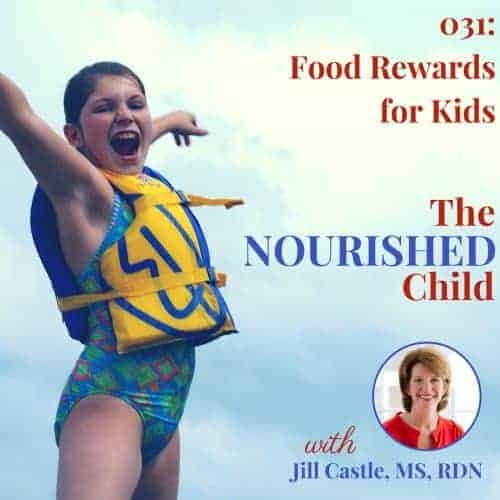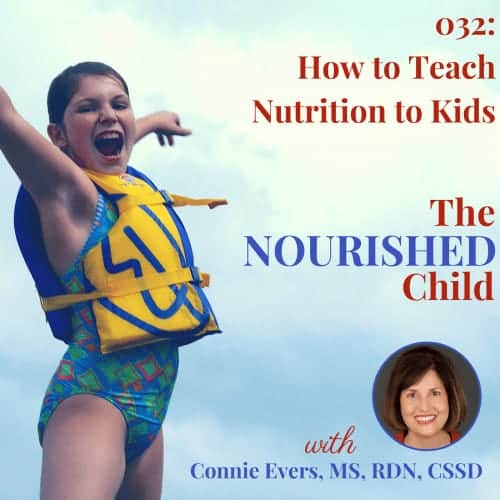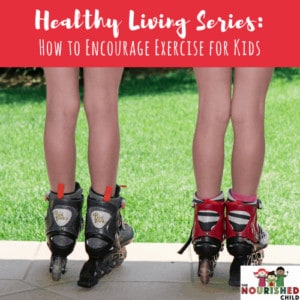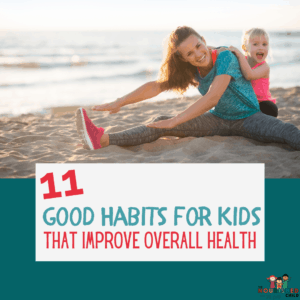How to Build Strong Bones from Tyke to Teen
May 17, 2017
Learn how to build strong bones from toddlerhood through the teen years.
Bone health and building strong bones is a somewhat mysterious concept. As a child nutritionist, I know it’s important — you know it’s important. The reality is, however, you can’t outwardly see strong bones or understand whether you’re doing a good job at building them.
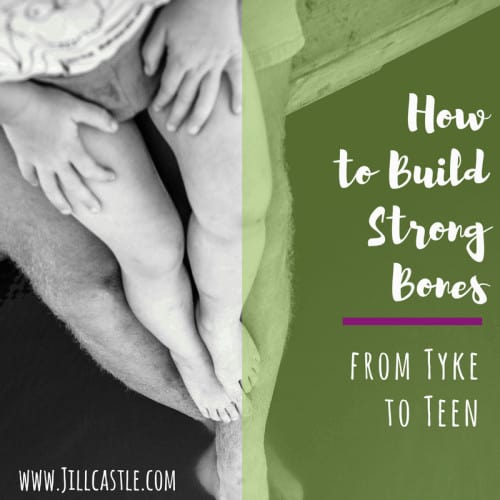
Research suggests that strong bones are built during childhood and contribute to healthy bones in adulthood, including fewer bone fractures, better posture, and overall mobility. It’s pretty clear that bone building in childhood pays off in bone health as an adult.
Unfortunately, 54 million people in the U.S. have osteoporosis (porous bones) or osteopenia (low bone mass), more than half of these individuals are over the age of fifty-five, according to the National Osteoporosis Foundation.
The International Osteoporosis Foundation estimates that by 2020, 61 million will be afflicted with osteoporosis or osteopenia.
The National Osteoporosis Foundation recently published a position paper on peak bone mass and the lifestyle factors that influence bone growth and health.
[I discuss these findings and recommendations for children of all ages in depth in this episode with Dr. Taylor Wallace on The Nourished Child podcast.
In children, the effects of poor bone health are hard to see, though we do have some clues. One study compared rates of broken bones from 1999 to 2001 versus 1969 to 1971 and found a 42% increased incidence.
Although there are several factors and contributors to strong bones, one modifiable element is the nutritional quality of the diet, especially calcium.
#AD: When it comes to strong #bones, what you put in during childhood is what you get out in #bonehealth as an adult. Click To TweetBone Density: Minerals and Vitamins for Strong Bones
Bones are hardened and made dense by the presence of calcium, which is a mineral. Calcium enters the bone with the assistance of vitamin D, the sunshine vitamin. It’s deposited in the bone, strengthening and thickening it. Exercise helps harden and densify bones, too.
Calcium is very important for many functions in the body including muscle contraction, heart function, blood clotting, and more. As such, calcium is maintained with tight control in the blood stream so that levels remain stable and the body can function normally.
Bones and teeth hold a “bank” of stored calcium. In fact, up to 99% of calcium in our body is located there.
If enough calcium is eaten, then calcium is deposited in the bones and the bank remains untouched. If calcium is deficient in the diet, the body will make a withdrawal of calcium from the bone to maintain normal levels of calcium in the blood. Calcium withdrawals from the bone put bone health at risk.
During childhood, bones are in a building phase. This phase lasts until early adulthood at which time bones are at their peak density and strength. Those children with high peak bone mass are less likely to develop osteoporosis and osteopenia later in adulthood.
#AD: Bones are in “building mode” during childhood -- growing, strengthening and hardening. Click To TweetGrowing Strong Bones During Childhood
Since childhood is a critical component of future bone health, let’s explore what is going on and what you can do at each stage of development to help your child grow strong bones.
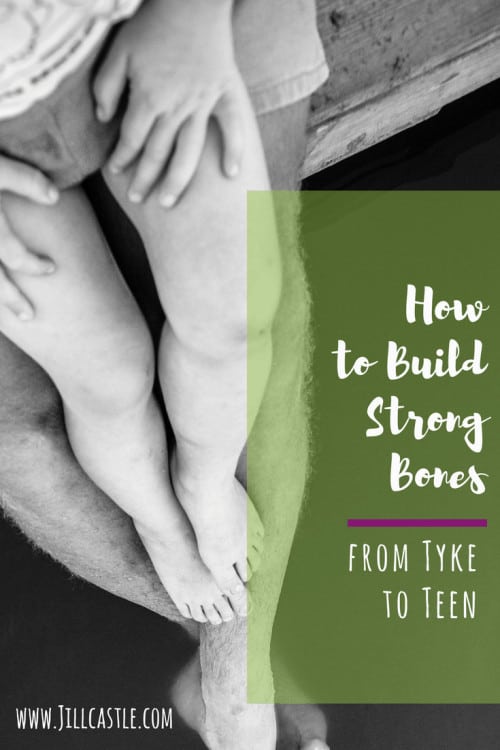
Bone Growth in Infancy
Babies are born with soft bones. The presence of calcium in their diet, either from breastmilk or infant formula, helps harden their bones. Breastmilk supplies the right formulation and amounts of calcium for your baby, however, if your diet isn’t adequate in calcium, your body will make a withdrawal from your bone bank, leaving you at risk for poor bone health.
Infant formula is formulated to supply the calcium required by babies.
Around 6 months, most babies will start solids. During this time, breastmilk or formula will continue to supply the lion’s share of calcium. By the end of the first year, calcium-containing foods such as yogurt, cheese, some vegetables, and, by a year, cow’s milk (or a fortified milk alternative) will become the main contributors of your baby’s calcium intake.
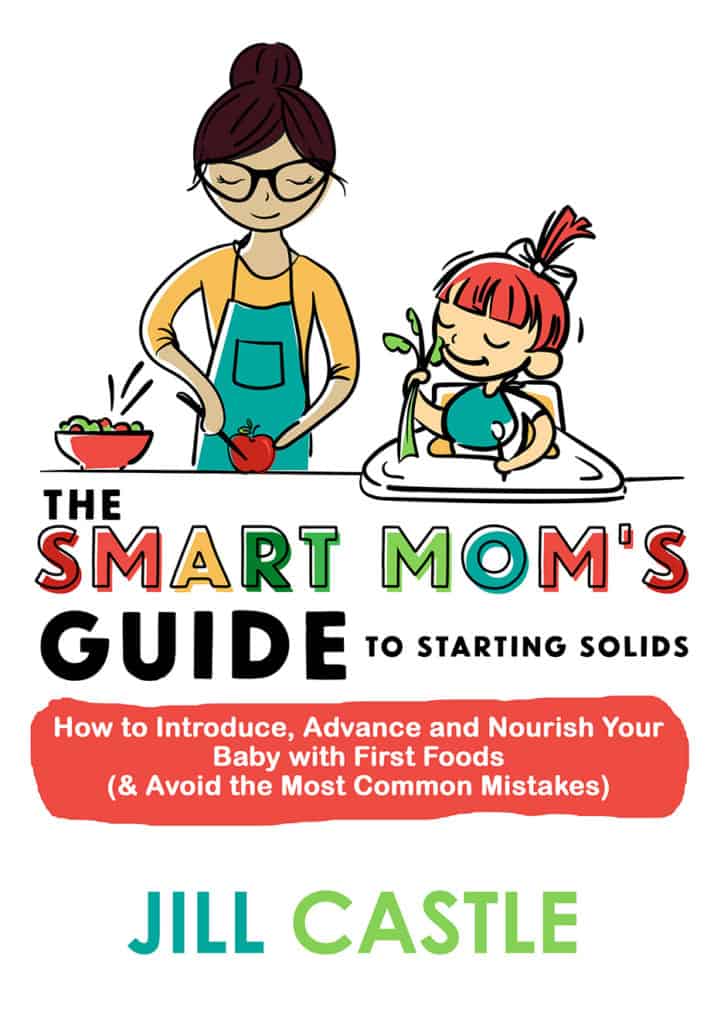
Bone Strengthening Food in Infancy
If you’re nursing, be sure to include calcium-rich foods in your diet every day and give your baby a vitamin D supplement (400 IU per day). Introduce calcium foods such as yogurt and cheese around 8 to 10 months, and cow’s milk by a year. If you’re avoiding animal sources of calcium, include plant-based calcium or fortified food sources such as broccoli and calcium-fortified tofu on a regular basis to meet overall calcium requirements.
Bone Builders in Toddlerhood & Preschool
According to the 2015 Dietary Guidelines for Americans, calcium intake is good in the toddler and preschool years, though it declines significantly from that point on, especially in girls. During ages four through eight years, 23% of boys and 34% of girls do not meet their requirement for calcium.
The advent of school probably plays a role in the dip in calcium consumption, as children who bring lunch from home may not get a calcium food source in their lunchbox, and children who buy lunch may not choose or drink milk.
Food for Strong Bones in Toddlerhood
Serve milk or other calcium-rich foods with all meals at home. If milk is a challenge for the school meal, include an alternative calcium-rich food such as a cheese stick, a container of yogurt or a frozen yogurt stick, or a make a sandwich with calcium-enriched bread.
Don’t let school lunch get you down! Offer an after-school snack that includes a calcium-rich food instead. For those children who cannot eat dairy products, be sure to include alternatives so your child gets adequate calcium in his diet. Work in fatty fish, or vitamin D-fortified foods like milk, OJ and eggs.
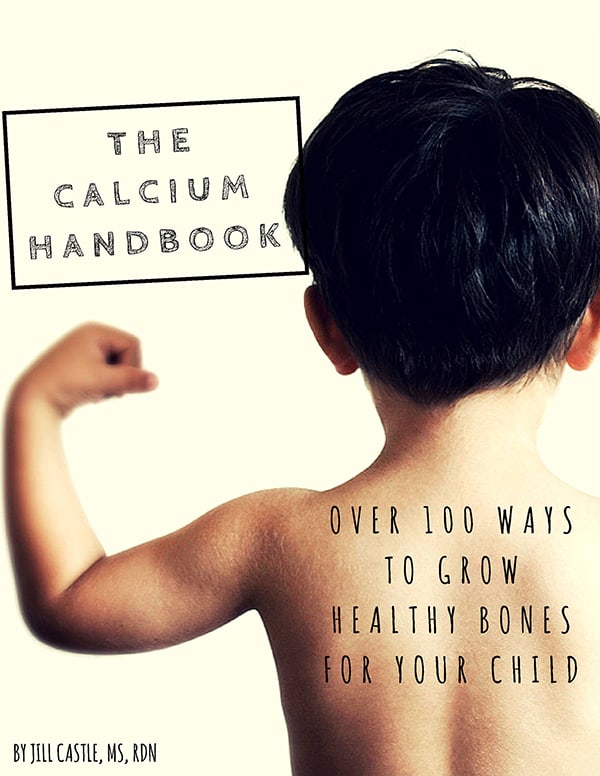
Learn more about calcium for kids!
Building Bones During the School-Age Years
Hands down, the decade between ages 9 and 19 years is the most important time frame for building strong bones. Yet, fifty-one percent of 9-13 year-old boys and 73% of same age girls do not meet the requirement for calcium, according to the DGA.
On the one hand, exercise and sports playing increases during this time, which helps strengthen bones — a good thing. On the other hand, calcium intake takes a nosedive, at a time when requirements increase (1300 mg per day – the highest requirement during the lifespan!).
Foods to Strengthen Bones in Childhood
When planning meals and snacks, keep your eye on calcium-rich foods and how you can include them. Dairy products, fortified and enriched foods, and plant food sources can be combined and included in meals and snacks. Remember, children need three servings of dairy products to close in on their calcium requirements. If, despite your efforts, your child isn’t getting enough calcium or vitamin D, consider the use of a supplement with a dietitian/nutritionist or your doctor.
Bone Strengthening During the Teen Years
The teen years are a time of high growth and the bones are no exception. The long bones are lengthening (quite noticeably) and they continue to strengthen with optimal nutrition and activity.
Boys aged 14-18 years do a bit better with calcium intake. However, there are about 40% of male teens who don’t meet their estimated requirements. Teen girls, though, fare much worse with 79% of them receiving less than what they need.
Adolescence brings on independent food choices and eating, a higher propensity for restrictive eating (dieting) and other unhealthy eating habits. Tallied up, these factors may be the under-pinning for poor calcium intake.
This is unfortunate because adolescence is the “last chance” opportunity for building strong bones during childhood.
#AD: Adolescence is the “last chance” opportunity for building strong #bones during childhood. Click To TweetIncorporate Bone Health Foods in Adolescence
Educate your teen and bring awareness to the importance of building strong bones and how that ties to future bone health. In the end, you have less control over what your teen eats, but great influence over meal planning, food availability in your home, and positive communication about your child’s future adult health.
For more insight into calcium, and the foods, meal plans and strategies I recommend for building healthy bones in childhood, check out my book: The Calcium Handbook for Kids: Over 100 Ways to Grow Healthy Bones
This post was created in partnership with the dairy farm families of New England. I was compensated for this post and all opinions are my own.
For information about the dairy farm families of New England, school nutrition, and health and wellness topics, please visit New England Dairy & Food Council and Must Be the Milk.

